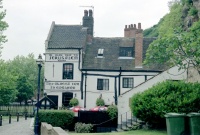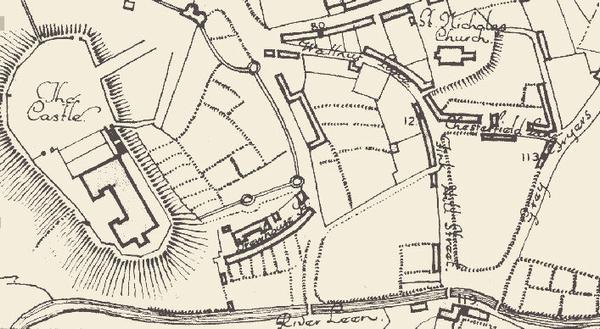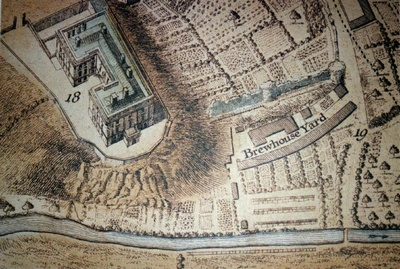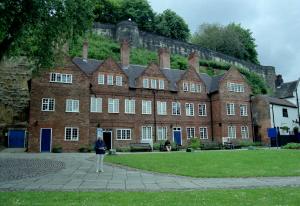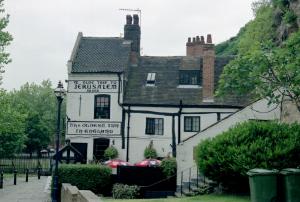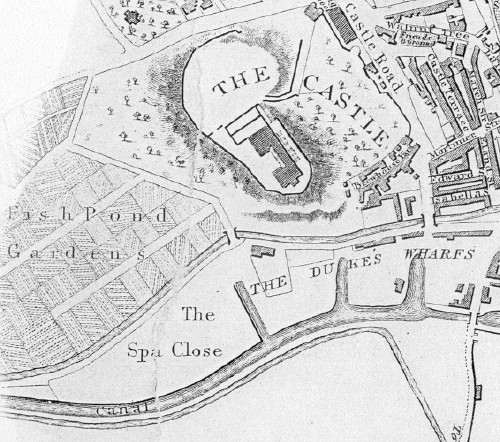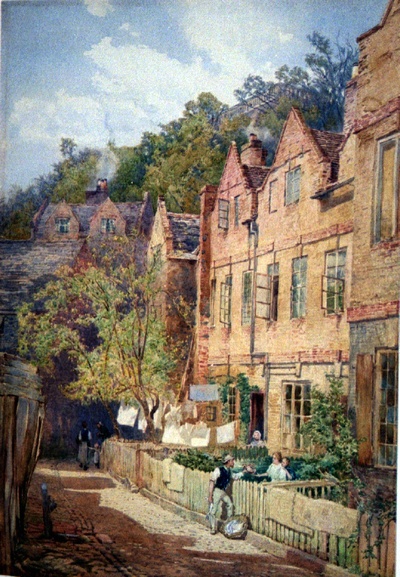THE FROGGATT FAMILY OF BREWHOUSE YARD:AN EXTRA-PAROCHIAL PLACE ADJOINING NOTTINGHAM CITY(1797 - 1835)FOREWORD
The Froggatt families in New Zealand and Australia that have descended from James Froggatt of Brewhouse Yard have no first-hand knowledge of the life and relationships of our ancestors. Not a single piece of family history, tangible or verbal, has survived. Thus everything that we now know about the family has been pieced together from official records, documents, rolls, directories, newspapers and other papers held in various State and Municipal Archives. To me, it is a testimony of the determination of the keepers of these records that so much information has survived, and is increasingly accessible from the other side of the world. However, much of this information has, by its nature, been collected first hand by visits to Brewhouse Yard and the nearby Nottingham Archives. I am grateful to Suella Postles, who was the long-time Archivist at Brewhouse Yard, and the staff at Nottingham Archives for their assistance and suggestions. More recently of course, the Internet has revolutionised access to records, through sites such as Ancestry.co.uk, findmypast.co.uk, freebmd.org, gro.gov.uk and familysearch.org. Beginning at Brewhouse YardThe first record we have of a FROGGATT living at Brewhouse Yard is the marriage of James to Ann REDGARD at Nottingham St Nicholas on 29 September 1798. This followed the burial of James' first wife Ellen on 31 August 1798; Ellen was buried at Nottingham St Nicholas so the family was probably living at Brewouse Yard by this time. Read on about Brewhouse Yard, or follow this link for the History of the Froggatt family of Brewhouse Yard. Brewhouse Yard was an unusual place in the 18th and 19th CenturiesIt lay outside the boundary of the City of Nottingham, and in particular, it was outside the jurisdiction of the local church parishes. In earlier years it was regarded as a lawless place, but by the end of the 18th century when James Froggatt and family arrived it was more settled, and was nominally part of the Broxtowe Hundred. The 1744 Badder & Peat Map of Nottingham, and the 1745 coloured version shows BHY as a narrow yard between two long narrow buildings, lying between the River Leen and the Castle:
The most famous part of BHY is proably the old pub, the Trip to Jeruselum. It claims to have been opened in 1189 and to have been connected to the Crusades. The story is told on the pub's website. The above maps show a small square building to the right of the U-shape in BHY, and although not named on this map, is likely to be "The Trip".
An 1830 map shows BHY with more buildings. The Trip is now an L-shape. Note too the new streets to the east, especially Mortimer, Edward and Isabella. Also the building of the Duke's Wharfs and the canal that has replaced the River Leen.
A painting of BHY from the early 1800s, a copy of which is on display at the BHY Museum, shows the narrow yard, the brick buildings beside the cliff, and a hint of the buildings facing the yard. It was in this line of buildings that the Froggatt family resided from about 1798 to about 1833:
But by 1860 the second row of houses had been demolished, and along with it the Froggatt family history:
So where did the Froggatt family live in Brewhouse Yard?The buildings at BHY were owned by Cornelius LAUNDER and there are records of the Land Tax being paid to him. Ann REDGARD had been resident at Brewhouse Yard for several years prior to her marriage to James Froggatt and she had paid 5 shillings per year for 1791 to 1798. It would appear that after the marriage James Froggatt moved into Ann's residence, with his children Elizabeth and James (Hannah having married Samuel GODKIN in 1794), for he is recorded as paying the land tax on the same residence in the following years. Although a James Froggatt is recorded as paying the tax from 1799 to 1819, James (senior) died in 1808 and Ann in 1814, so we can conclude that James (junior) lived at the same address and continued to pay the tax. In 1807 the property was described as "one dwellinghouse and garden". James is recorded as paying the second highest land tax of the residents in this building. Based on size, this would suggest the second or third from the right.
THE LAST FROGGATT OF BREWHOUSE YARDThe Froggatt family relationship with Brewhouse Yard came to an end with the death of Joseph Froggatt in 1917. This closed the history on four generations and 17 children who had lived or been born at BHY. Of those 17 children, 9 survived to adulthood but only 4 were male and who had offspring to continue the Froggatt name. Two of these were the youngest born at BHY (William and Joseph). William’s 2 surviving sons (William and James) emigrated to Australia with only William having children (14 in total) leaving Joseph’s son Harry Joseph Froggatt as the sole remaining Brewhouse Yard descendent bearing the FROGGATT name in England. And Harry died in 1956 with one son and a granddaughter. William (1869-1947) had 14 children in Australia and New Zealand but only 5 were sons who reached adulthood. The oldest, Frank, was adopted early in his life and become known as Frank HUME the other 4 having 7 sons between them. Back to Froggatt Family History Last updated 14 August 2022 |
